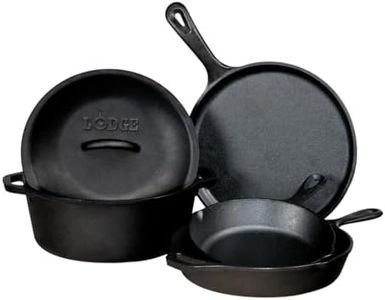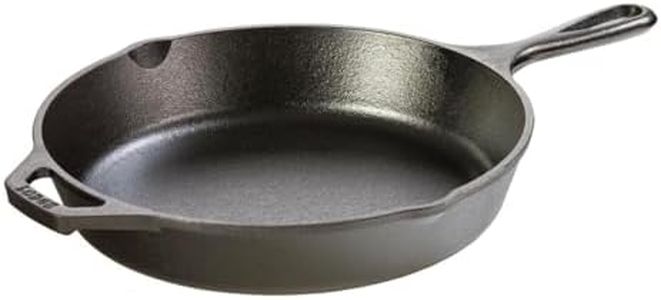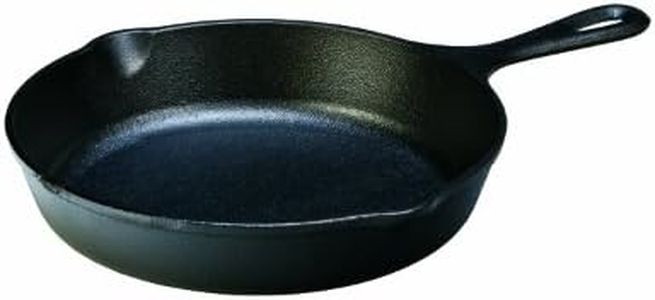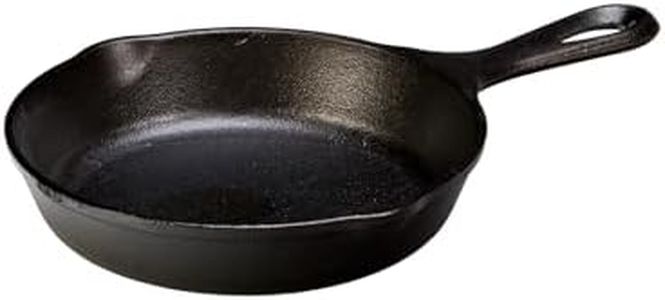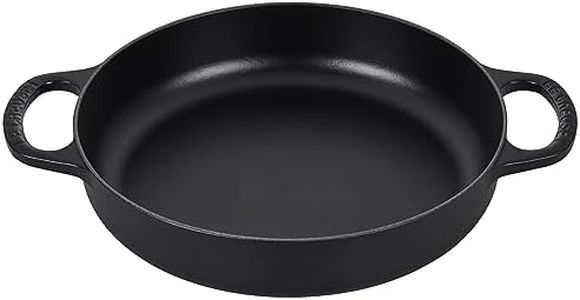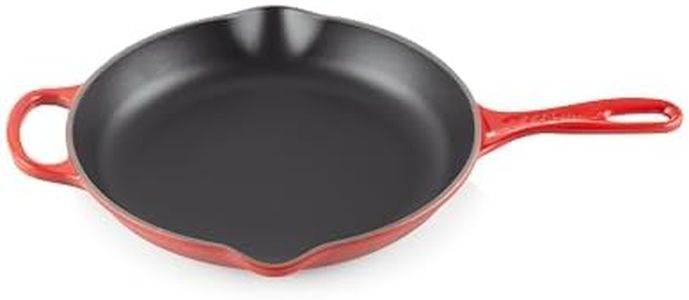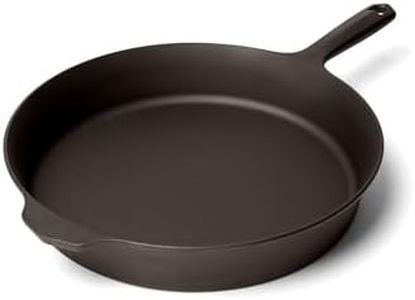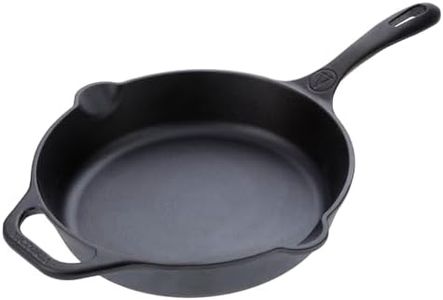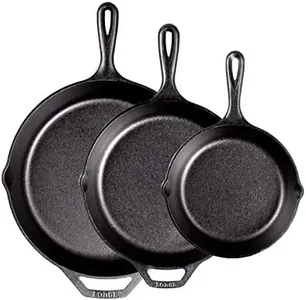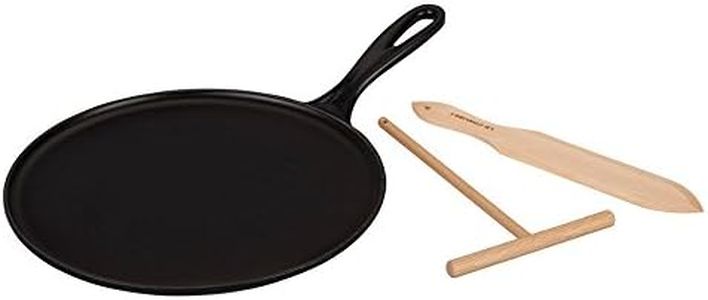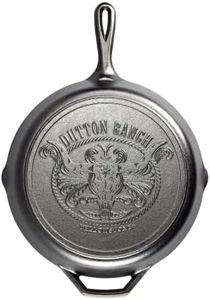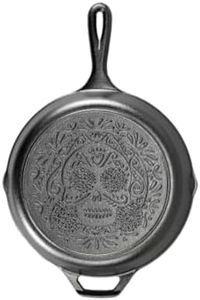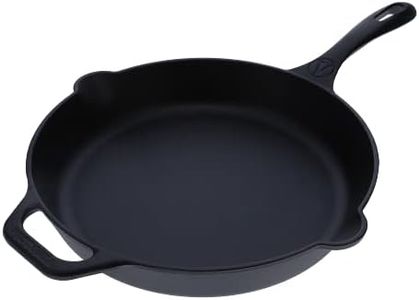We Use CookiesWe use cookies to enhance the security, performance,
functionality and for analytical and promotional activities. By continuing to browse this site you
are agreeing to our privacy policy
10 Best Cast Iron Pans
From leading brands and best sellers available on the web.#1
Winner
Buying Guide for the Best Cast Iron Pans
Choosing the right cast-iron pan is all about understanding how you'll use it in your kitchen. A cast-iron pan can last you for generations if you pick the right size and style that matches your cooking needs. Think about what dishes you love to prepare, how much food you typically make, and the type of stove or oven you use. By considering these factors and understanding key specifications, you can confidently find a pan that feels right at home in your kitchen.Size (Diameter and Depth)The size of a cast-iron pan determines how much food you can cook at one time. Pan sizes are usually measured by diameter across the top. Smaller pans (around 6-8 inches) are perfect for frying an egg or cooking for one, while medium pans (10-12 inches) suit most family needs, like searing meats or making stir-fries. Larger pans (14 inches or more) are ideal for big families or cooking large dishes. Depth also matters—shallow pans are great for frying, while deeper ones work well for braising or casseroles. Choose the size based on how many people you usually cook for and what recipes you make most often.
WeightCast-iron pans are naturally heavy, but their exact weight can vary. Lighter pans are easier to handle, especially when lifting or pouring out food, but may not retain heat as well as heavier ones. Heavier pans can be awkward to move, especially for those with limited wrist strength, yet they provide more even heat distribution. Think about your strength and whether you'll need to move the pan often, and try lifting similar weights before choosing.
Pre-seasoned vs. UnseasonedSome cast-iron pans come pre-seasoned, meaning they've already undergone a process to create a natural nonstick surface, while others require you to season them at home. Pre-seasoned pans are ready to use right away, which is great for beginners or those who want minimal fuss. Unseasoned pans give you more control over building your own seasoning layer, which some experienced cooks prefer. If you're new to cast-iron, pre-seasoned can simplify things, but if you enjoy DIY projects or want a more personalized nonstick surface, unseasoned is a solid choice.
Handle DesignThe handle design affects comfort and safety. Short handles are easier to store and fit in ovens, but can get hot quickly. Longer handles stay cooler and provide more leverage for lifting. Some pans also have a helper handle on the opposite side, making it easier to carry heavy, full pans. Think about how you'll move the pan: if you'll lift it often or carry it with food inside, a helper handle can be a big advantage.
Cooking Surface (Smooth vs. Textured)Cast-iron pans can have either a smooth or slightly rough interior. Smooth surfaces make it easier to flip or release delicate foods, as they mimic nonstick properties better over time. Textured surfaces, which feel more bumpy, can help with browning and seasoning but may be trickier for certain recipes. If you plan on cooking foods that stick easily, like eggs or pancakes, a smoother surface may be more forgiving, while a rougher texture suits searing meats or rustic dishes.
Compatibility (Stovetop and Oven Use)Most cast-iron pans are versatile and can be used on gas, electric, induction stovetops, and in the oven. However, make sure the pan you're considering is compatible with your cooktop, especially if you have an induction stove, as a flat base is important for good contact. If you plan to bake or broil in the oven, also check that the handle material and overall size fit inside your oven.
